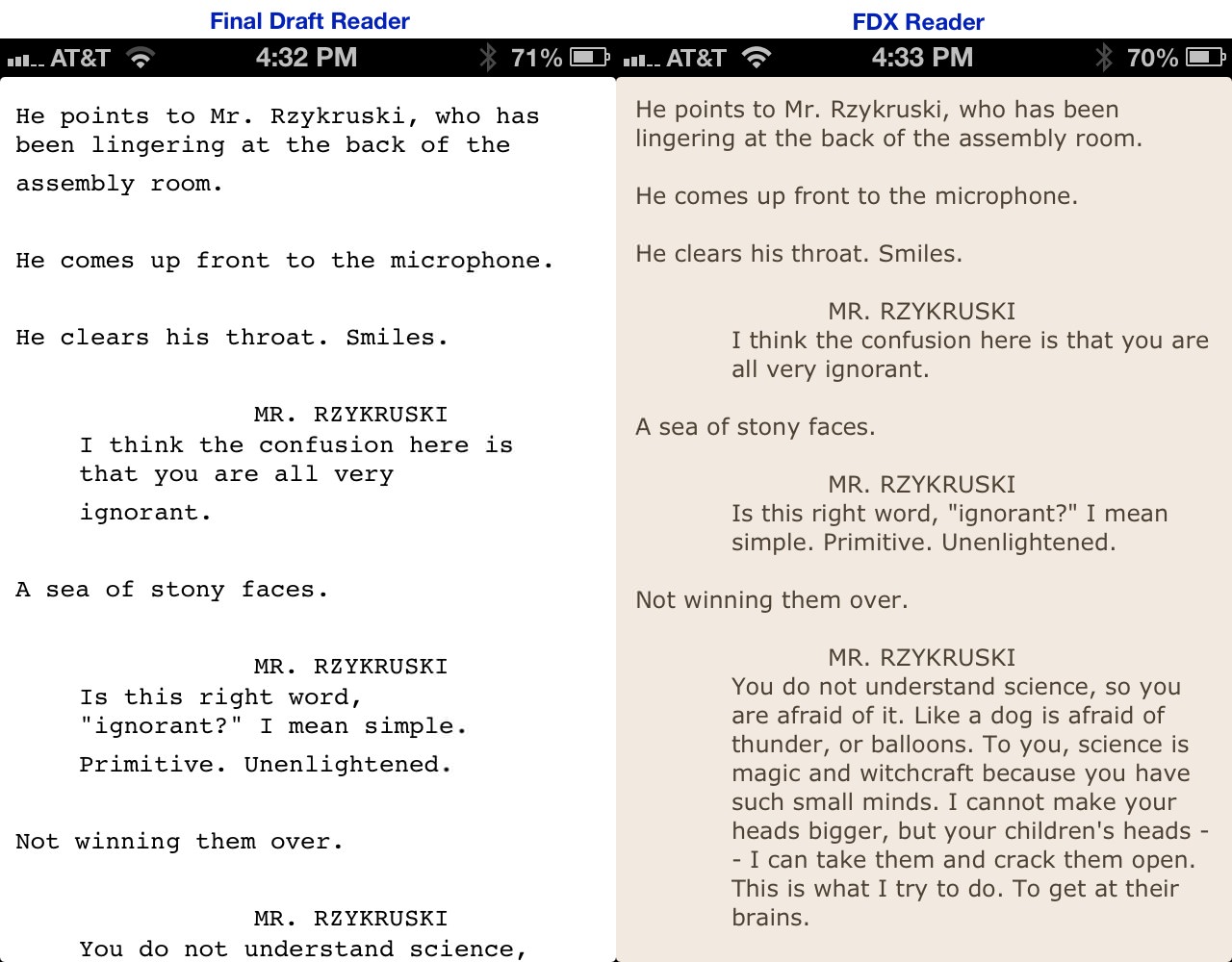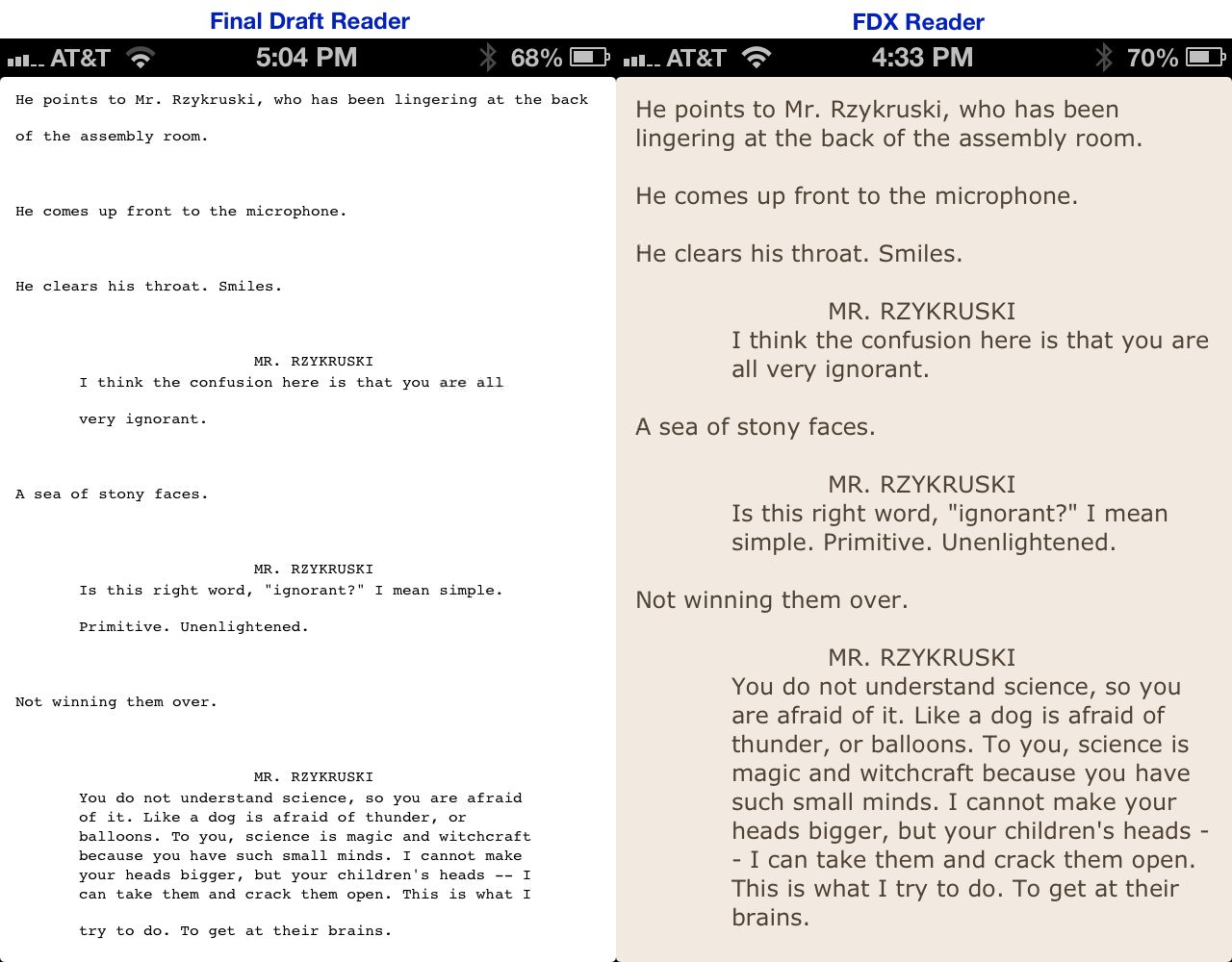Late last week, Final Draft released a new version of [Final Draft Reader](https://itunes.apple.com/us/app/final-draft-reader/id497421221?mt=8), adding support for iPhones to their heretofore iPad-only app.
From a basic design standpoint, their iPhone implementation is almost identical to what we did with [FDX Reader](https://itunes.apple.com/us/app/fdx-reader/id437362569?mt=8), using a continuous scroll rather than page-flipping to accommodate the smaller screen. I won’t break out the old imitation-is-flattery bromide; it’s simply the right choice given the situation.
Unfortunately, you’re going to be scrolling a lot with Final Draft’s version, because they insist on using traditional Courier. It’s a mistake. You simply can’t fit very much on the screen using that font.
Compare [two screenshots](http://johnaugust.com/Assets/fd-v-fdx-72.jpg) from Frankenweenie:

Like FDX Reader, Final Draft Reader allows you to reduce the font size. By doing so, you can fit the same amount of Frankenweenie on the screen. But you probably wouldn’t like the [results](http://johnaugust.com/Assets/smaller-fd.jpg):

Final Draft Reader isn’t trying to match printed pages like it does in portrait view on the iPad, so there’s simply no good argument for sticking with Courier for this “Reader View.” It’s just bad design.
Being an official product, the app provides “100% accurate Final Draft pagination, formatting and page breaking.” That’s like saying only Coca-Cola can provide pure Coke flavor, but fine.
Their app can do several things FDX Reader doesn’t even attempt, such as editing ScriptNotes and showing colored page revisions. You can link to your Dropbox account, but only for exporting files *from* the app, so it’s not particularly useful. That’s consistent with a lot of what I found: placeholders and possibilities rather than actual utility.
Final Draft Reader is now free. That makes sense; they want users to pay for the $50 Final Draft Writer app.
We’ll keep selling and supporting FDX Reader as an alternative, but as I wrote [back in February](http://johnaugust.com/2012/pricing-fdx-reader), we’re not actively developing it anymore. Our next projects include more ambitious efforts like [Highland](http://quoteunquoteapps.com/highland/).